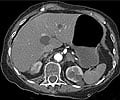The law to ban smoking in public places in India came into force in 2004 and was further amended in 2008 to make it more stringent. Tobacco use accounts for 40% cancers in India and ‘The Public Health Foundation of India’ estimates that economic costs from all diseases in India in 2011 due to the use of tobacco amounted to a staggering Rs.1,04,500 crore or 12% more than the combined state and central government expenditure on health care in the same year.
A recent study published in the National Medical Journal of India, “Monitoring smoke-free laws in restaurants and educational institutions in Chennai, India,” by Prabhdeep Kaur, Daniel Rajashekar Thomas, Elavarasan Govindasamy, Manoj V. Murhekar, has analyzed the extent to which the smoking law has been successful in the Tamil Nadu capital city of Chennai and has come up with some shocking results. The law called ‘Cigarettes and Other Tobacco Products Act (COTPA)’ was passed by the Government of India in 2003 and the sale of tobacco products, within 100 yards of educational institutions was banned in 2004. It also prohibited smoking in public places.The study assessed compliance with smoke-free laws by various restaurants and educational institutions in Chennai, Tamil Nadu, with the presence of a warning signage and smoking events as objective indicators. About 400 restaurants, 287 schools and 54 colleges in Chennai were sampled for the survey.
The results of the survey were shocking but not surprising. Only 29 of the 400 restaurants that were surveyed had any signage that displayed ‘No Smoking.’ Of the 29 restaurants that did have the sign, only 4 had displayed them as per specifications. At the time of visit for survey, there were about 62 smoking events in the restaurants.
Among educational institutions only eight of the 287 schools surveyed had the sign displaying prohibition of smoking and two had the sign on ban on sale of tobacco products. In the case of colleges, only eight of the 54 had the ‘No Smoking’ sign and the ban on sale of tobacco products sign was displayed in seven colleges.
The results of the survey clearly indicate that the compliance with law against smoking in public places was inadequate in restaurants and educational institutions in Chennai. The study also found that the data was consistent with a similar 2008 survey taken in the same city. This survey had shown detectable amounts of nicotine in the air around schools and restaurants. The current study is the first of its kind in the country and hence a very representative study of the state of affairs. If this study were replicated in other cities or towns the results would not be much different.
Comprehensive smoke-free laws that prohibit smoking in public places, such as bars, restaurants and workplaces, have been shown to protect the population from the dangers of passive smoking in many countries.
- Coronary events or heart attacks (relative risk: 0.848)
- Other heart disease (relative risk: 0.610)
- Cerebrovascular accidents such as stroke (relative risk: 0.840)
- Respiratory disease such as asthma (relative risk: 0.760)
According to the World Health Organization (WHO), tobacco kills around 6 million people a year worldwide, including more than 600,000 non-smokers who die from exposure to second-hand smoke.
How can we ensure that there is a better compliance to the anti-smoking law in India? Medindia makes following recommendations for individual and public places violations:
- There must be a separate enforcement directorate in each state for its implementation
- There should be a recruitment of citizens, who would be able to report violations through photographs or videos that can be easily captured through cell phones and reported to the directorate
- The fine amount should be increased from Rs.200 to a maximum of Rs.1000 for an individual who violates the law
- All public places should have compulsory signage against smoking and violations should result in fines that should range from Rs.10,000 to Rs.50,000
- Repeated violations in public places like bars, restaurants, shops, malls, cinema houses, schools and colleges should result in temporary closure of such premises for a short period of time
Law against Smoking in India
The Cigarettes and other Tobacco Products (Prohibition of Advertisement and Regulation of trade and Commerce, production, Supply and Distribution Act, 2003)The law was enacted in May 2003 mainly to discourage the consumption of cigarettes and other tobacco products. This Act is applicable to the entire country. The salient features of this legislation include:
- Ban on smoking in public places
- Ban on sale of tobacco products to minors
- Ban on direct and indirect advertisements of all tobacco products
- Ban on sale of tobacco products within a radius of 100 yards of educational institutions
- Specified health warnings on tobacco products
- 'Public Place' as defined in the rules means, any place to which the public has access whether as or right or not, and includes Auditorium, Hospital Buildings, Health Institutions, Amusement Center, Restaurants, Hotels, Public Offices, Court Buildings, Educational Institutions, Libraries, Public Conveyance, Open Auditoria, Stadia, Clubs, Hookah, Bars (where smoking takes place). Railway Stations, Bus Stops, Workplaces, Shopping Malls, Cinema Halls, Refreshment Rooms, Discotheques, Coffee House, Pubs, Bars, Airport Lounges. But public place does not include open space e.g. Parking space, roads, open market places, parks, private homes etc
- Any violation of this act is a punishable offense with fine upto Rs. 200
- Display of warning board of a minimum size of 60 cm by 30 cm with the message “No Smoking Area –Smoking Here is an Offense” is mandatory
- The owner, proprietor, manager, supervisor or in-charge of the affairs of a public place shall notify and display the names of the persons to whom a complaint may be made
- If the owner, proprietor, manager, supervisor or the authorized officer of a public place fails to act on report of such violation, the owner, proprietor, manager, supervisor or the authorized officer shall be liable to pay fine equivalent to the number of individual offenses
- The owners, proprietor, manager, supervisor or in charge of the affairs of a hotel having thirty or more rooms or restaurants having seating capacity of thirty persons or more and the manager of the airport may provide for a separate smoking area or spaces as per specific provisions under the rules
Source-Medindia














